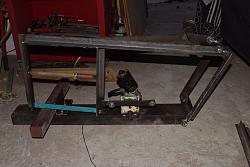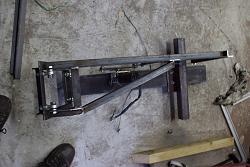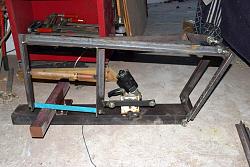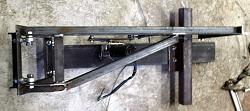Done.
Saw is working. Needs finishing off, proper vice, switch, arm rest and a coat of paint.
I must say it is very slow, so will start by adding weight to the arm.
I drilled the holes to mount the blade 2mm longer than the blade pitch in an effort to avoid a complicated and time consuming blade tensioner, but the blade wobbled on its first cut. I then added the 16mm threaded rod. nut and piece of pipe to push the two arms appart and add the desired tension.


 LinkBack URL
LinkBack URL About LinkBacks
About LinkBacks




 Reply With Quote
Reply With Quote






Bookmarks